On the spectrum of gravel bikes, the new Pinarello Grevil F is pitched at the far racy end with aerodynamic shaping, road positioning and a stiff chassis.
With its asymmetric design, swooping curves and internal routing, this looks – and handles – quite a bit like a Dogma F road race machine, but with clearance for up to 50mm tyres.
This build, with the 13-speed Campagnolo Ekar groupset, offers superb braking and a wide gear range for a 1x drivetrain, but the wheels are not up to par with the group or the frameset.
In terms of handling, the Grevil F has – for roadies, at least – a gravel Goldilocks geometry of being stable at speed but still agile, and with a stack and reach closer to a road bike than other, burlier gravel bikes that put the rider more upright.
Pinarello Grevil F frameset
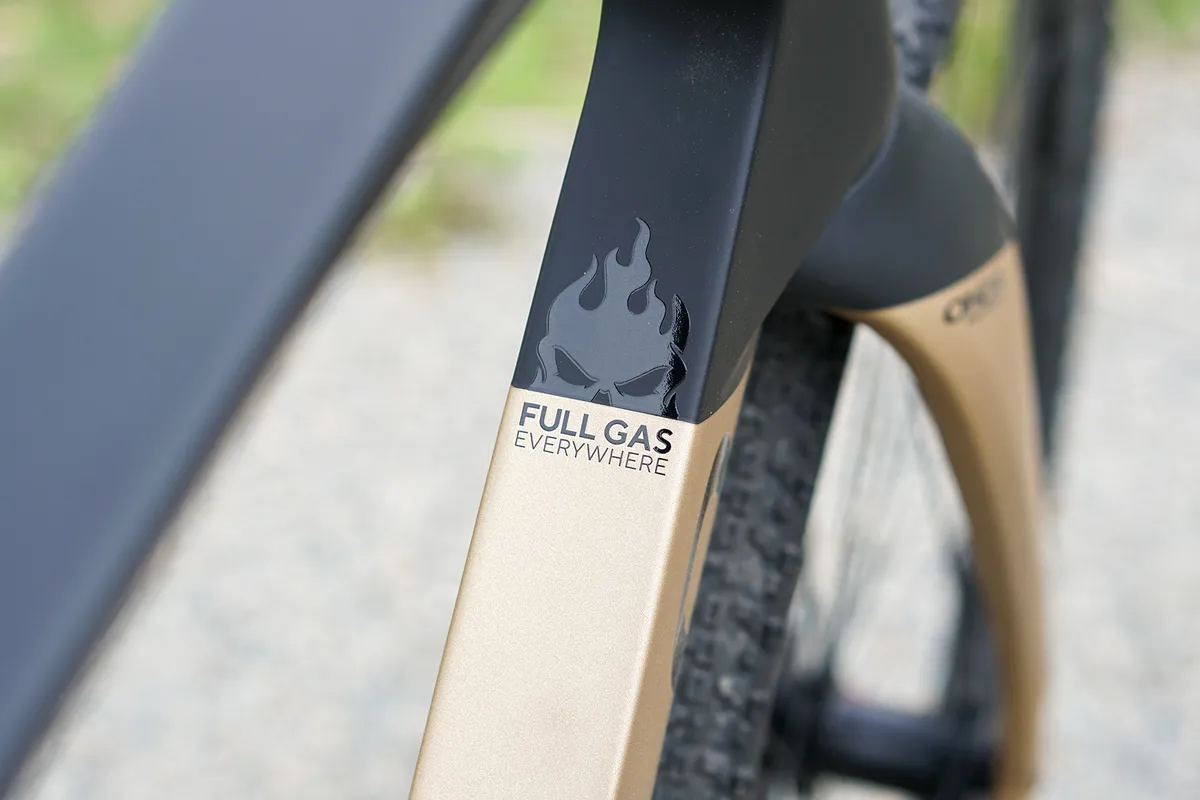
The T700 carbon frame takes many cues from the Pinarello Dogma F road bike, both visually and with a focus on pedaling efficiency and reduced aerodynamic drag.
Compared to the previous Grevil, the Grevil F is, you guessed it, stiffer (8 per cent) and more aerodynamic (4 per cent). While I’m sure both can be measured in a lab, I’ve ridden both bikes and cannot feel either change.
Pinarello’s stated saving of five watts at 40kph compared to the old frame is just one more manufacturer claim we’ll have to let sit.
However, I very much could tell a difference in the cable routing; while the old hoses would rattle in the frame and whistle in the wind on descents, the new bike is blissfully quiet thanks to its streamlined design.
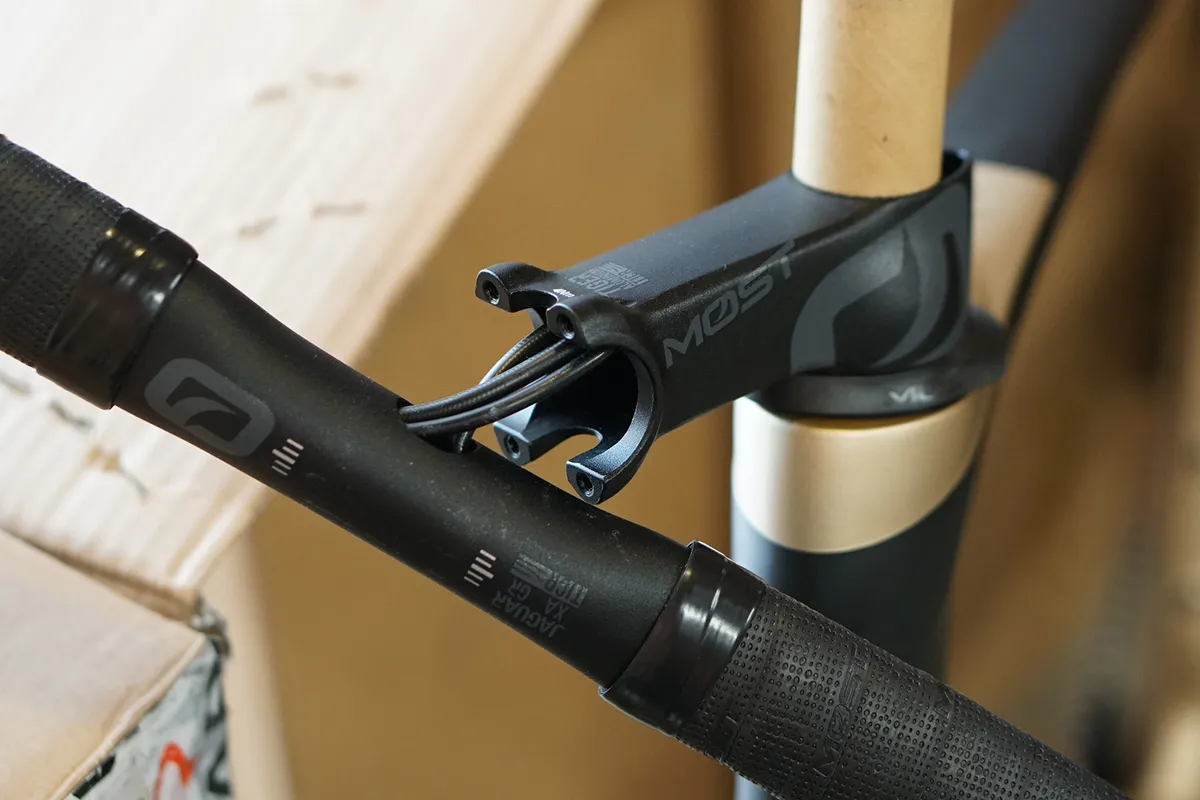
As with so many integrated bikes these days, the internal configuration requires that you know your fit coordinates before purchase to minimise headaches.
Speaking of integration, you can use any seatpost you like so long as it’s the one that comes with the bike. The aero post looks sleek and is painted to match the frame and curvy Onda fork.
While there is a dedicated portion near the top dedicated to flex, the post is certainly firmer than many stock posts on the best gravel bikes.
The Onda fork is solidly anchored with 1.5in bearings, the upper of which routes the brake lines up into the stem. The fork handles hard braking well without stutter, but still smooths out rough surfaces a small amount.
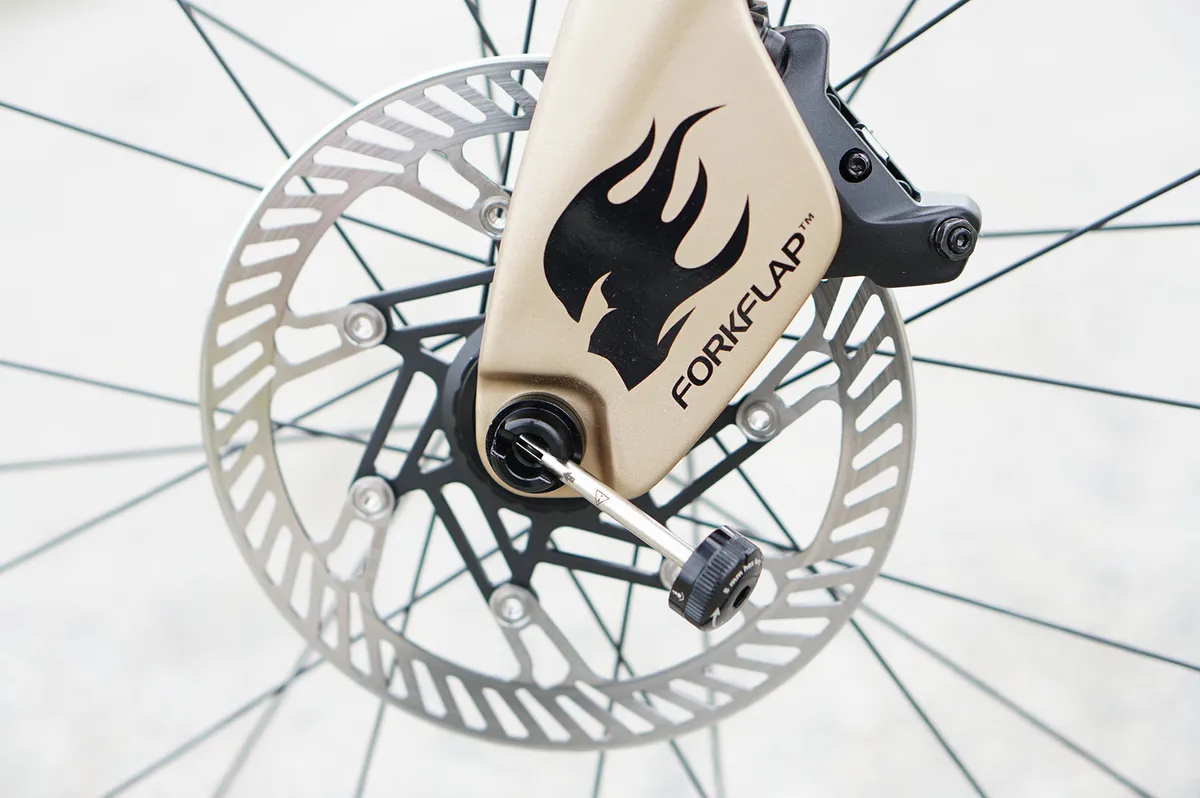
One novel piece on the frameset is the pop-out thru-axle levers. Many brands have opted for the sleek look of Allen-key axles.
I think having to dig out a tool to take your wheel off is a waste of time, but I get that not everyone wants a big lever on their wheel.
So, Pinarello’s spring-loaded solution here is a good one.
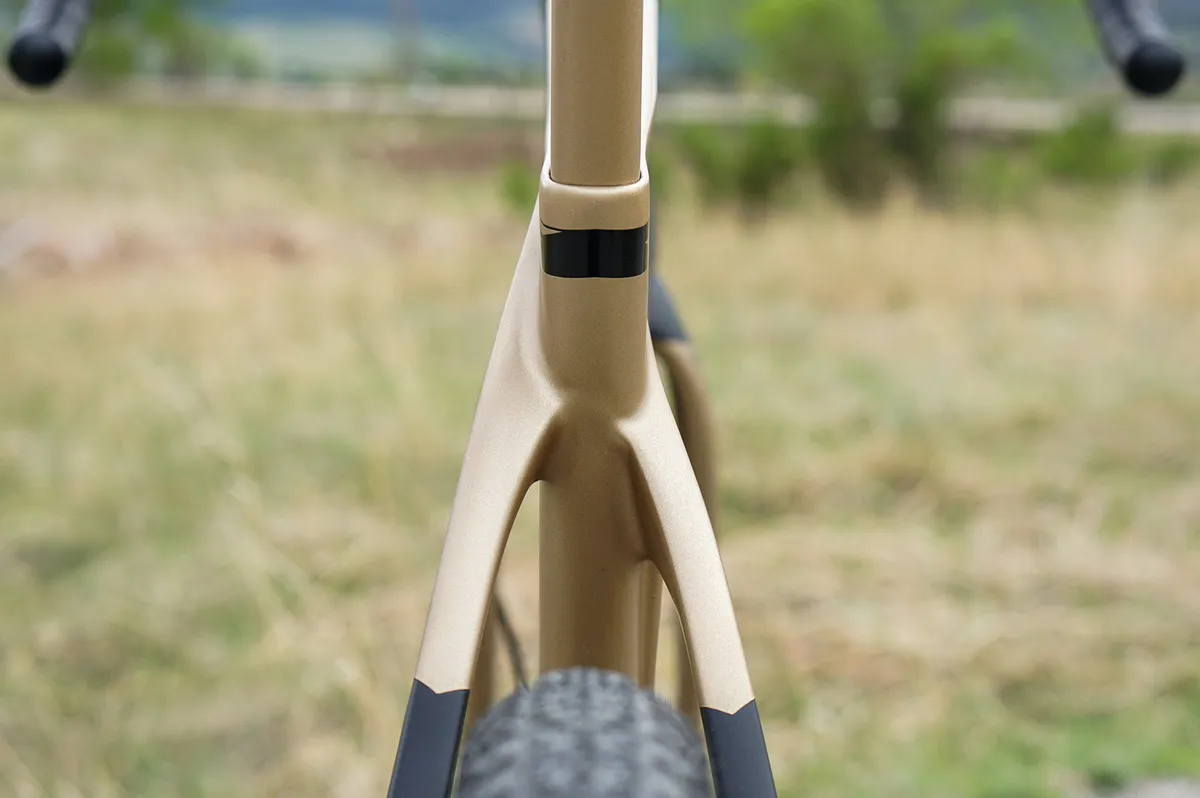
Pinarello Grevil F geometry
As the brand does with its road bikes, Pinarello designed each of the six sizes individually with regard both to geometry and tube thickness.
I tested a 56cm bike, for which the head tube angle is 71.75 degrees, putting it on the quicker end of gravel bikes. When paired with a 40mm-wide tyre, the fork's 50mm rake gives a trail figure of 69mm.
Trail is the difference between the front wheel’s tyre-patch centre and the bike’s steerer column.
The more trail, the more ‘stable’ a bike can feel. Making a bike more slack at the head tube is the primary way to increase trail, but fork rake and even tyre size play into this number.
Road bikes usually have less than 60mm of trail. The gravel bike with the most trail, at 93mm, is the Evil Chamois Hagar, but it is an outlier.
The Grevil F isn’t ‘twitchy’ like a road race bike or belligerently stable like a downhill mountain bike; it’s a happy medium that well suits its purpose of going fast on gravel.
The chainstays, at 425mm, are relatively tidy for a gravel bike, which helps with its lively feel.
| | 47 | 50 | 53 | 55 | 58 | 60 |
|---|---|---|---|---|---|---|
| Seat angle (degrees) | 74.5 | 74 | 73.75 | 73.5 | 73 | 72.25 |
| Head angle (degrees) | 70.25 | 70.5 | 70.75 | 71.75 | 72 | 72.25 |
| Chainstay (mm) | 422 | 422 | 422 | 425 | 425 | 425 |
| Seat tube (mm) | 410 | 445 | 475 | 500 | 520 | 550 |
| Top tube (mm) | 520 | 535 | 547 | 560 | 577 | 597 |
| Bottom bracket drop (mm) | 72 | 72 | 67 | 67 | 67 | 67 |
| Stack (mm) | 548.4 | 563.5 | 578.4 | 593.5 | 608.8 | 628.8 |
| Reach (mm) | 360.1 | 367.8 | 374.4 | 382 | 389.7 | 398.5 |
Pinarello Grevil F specifications
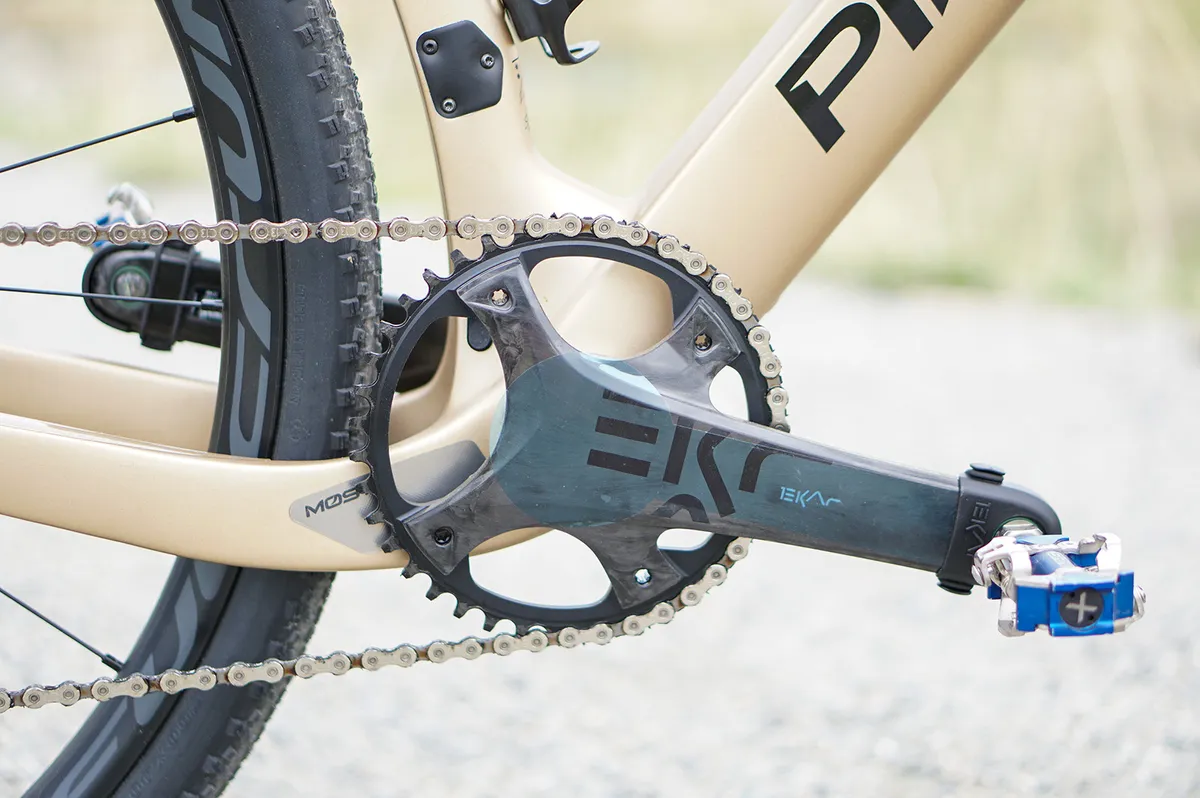
The MOST house components look sleek and function well – if they fit you. The short-nosed saddle is similar to a Specialized Power, and is the one piece that is easy to swap should you prefer something else.
The alloy bar and integrated stem feature internal routing, which looks good to the eye and in the wind tunnel, but swapping in a different stem length or handlebar width is an undertaking. I would highly recommend that you have your fit measurements dialed before you buy the bike, and have your shop set you up accordingly.
Adjusting the stem and handlebar height is easy enough with the interlocking spacers, but any other changes require disconnecting the brake lines.
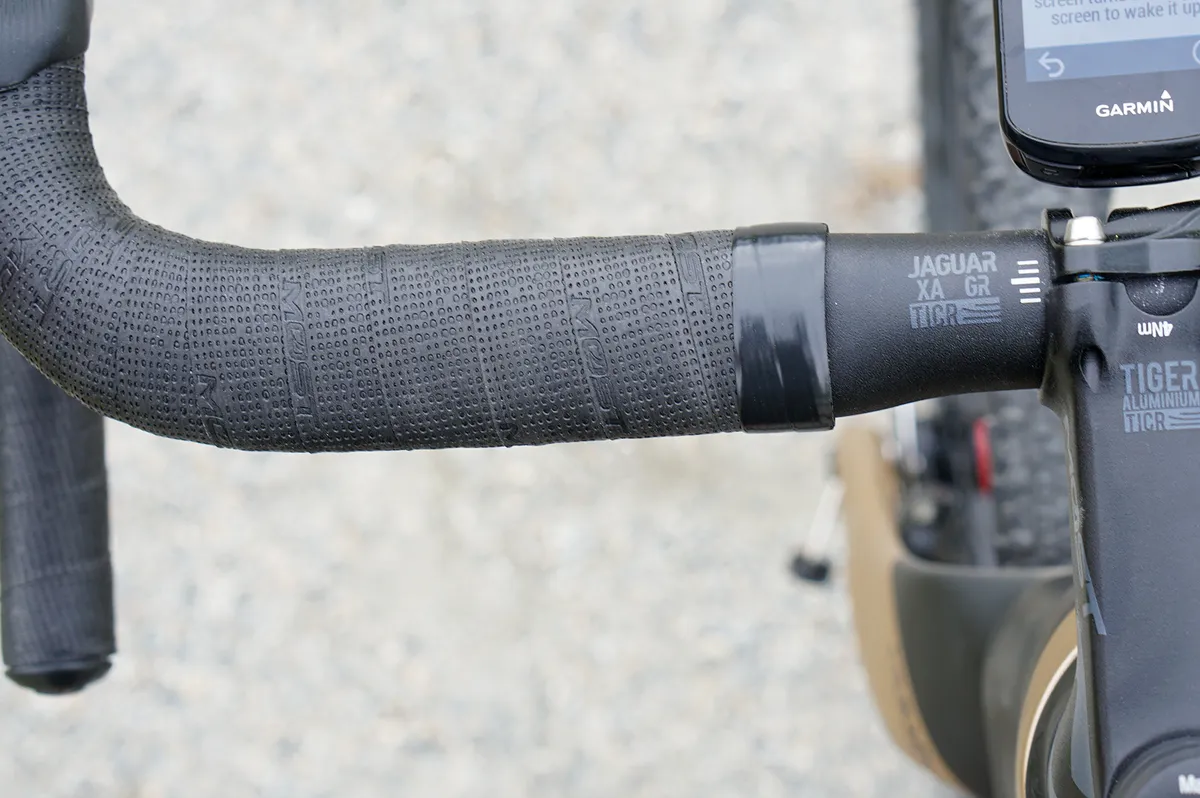
I found the handlebar to be comfortable, with its wide tops dispersing pressure on the palms. Take note if you want to install aerobars, however, because the available space for that is limited to a few centimetres right next to the stem.
The Campagnolo Ekar 13-speed mechanical group is a mixed bag, in my opinion. The braking feels and, dare I say, even sounds better than SRAM and Shimano’s options for gravel.
The modulation is smooth, powerful and makes a pleasant hum under hard power. The curved levers offer ample purchase for your index fingers.
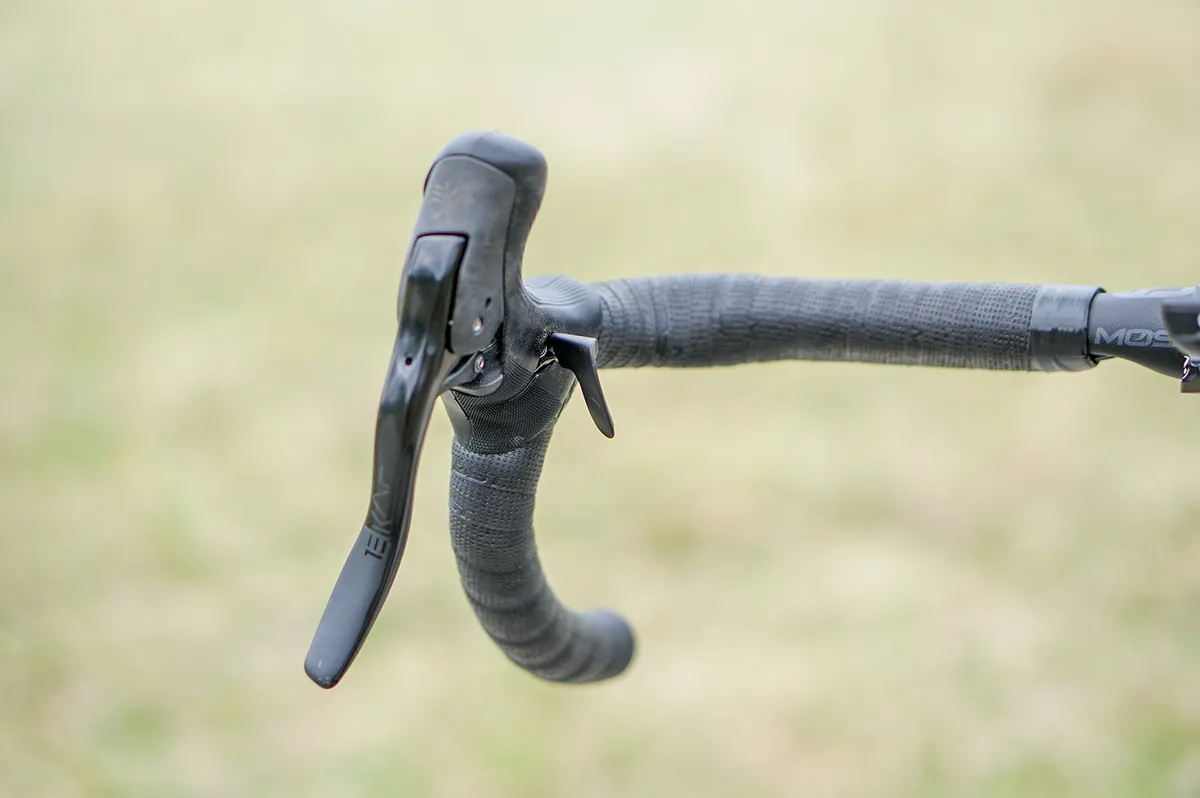
The shifting mechanism works well enough, but the thumb lever is awkward in almost all hand positions – and I don’t have small hands.
It is easiest to operate with your hands on the top curves of the bars, but set back from the brake levers slightly. On the hoods and in the drops, you have to twist your wrist to get to it.
Lastly, the Fulcrum Rapid Red 500 alloy wheels are solid hoops that will likely serve you well for many a year – but lightweight, aerodynamic models they are not. For a bike proclaimed to be ‘full gas everywhere’, the wheels are rather ho-hum.
Pinarello Grevil F ride impressions
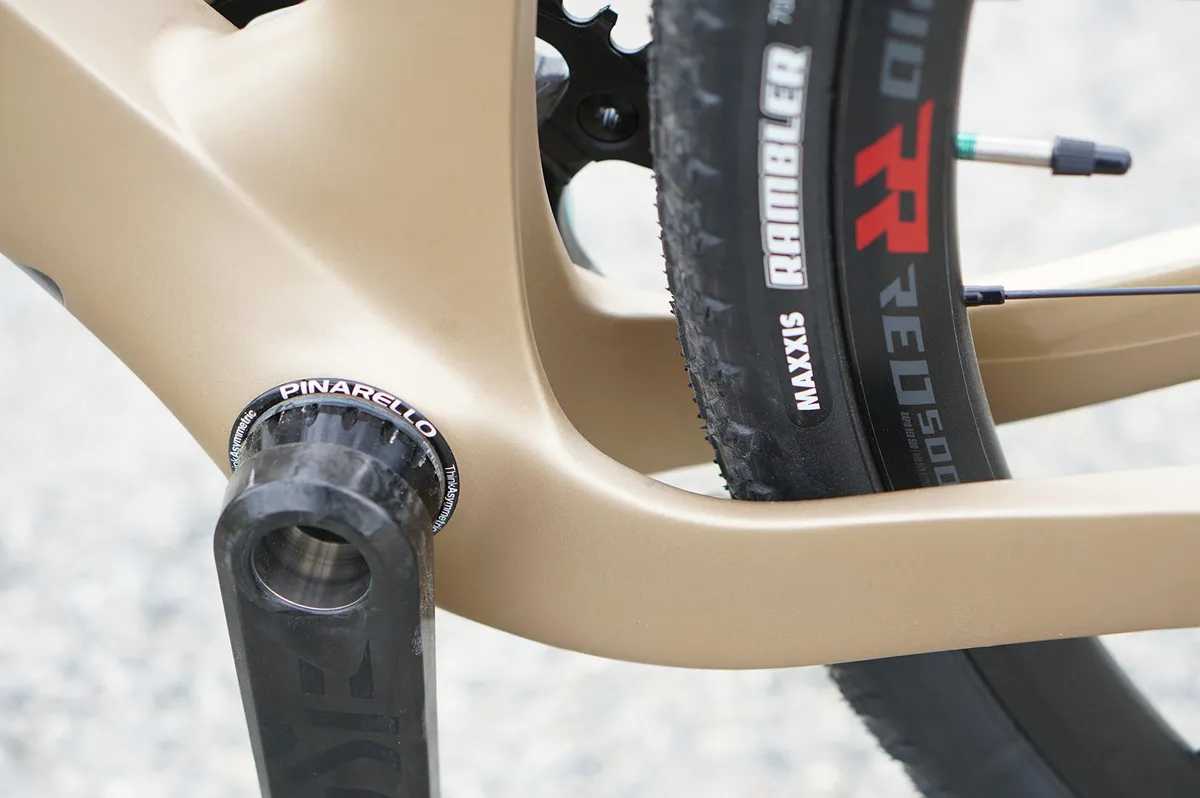
I tested the Grevil F on a variety of rides near Boulder, Colorado. I did not get a chance to race it, but I did do a few fast group rides, and a big climbing day in the mountains.
Wheels and, of course, tyres make a huge impact on how a bike feels, but I only tested the bike as it came.
I didn’t switch the 40mm-wide Maxxis Rambler tyres over to tubeless, as I would have done on a personal bike, but at the same time I didn’t flat over many rough miles at less than 40psi (I weigh 180lbs / 82kg).
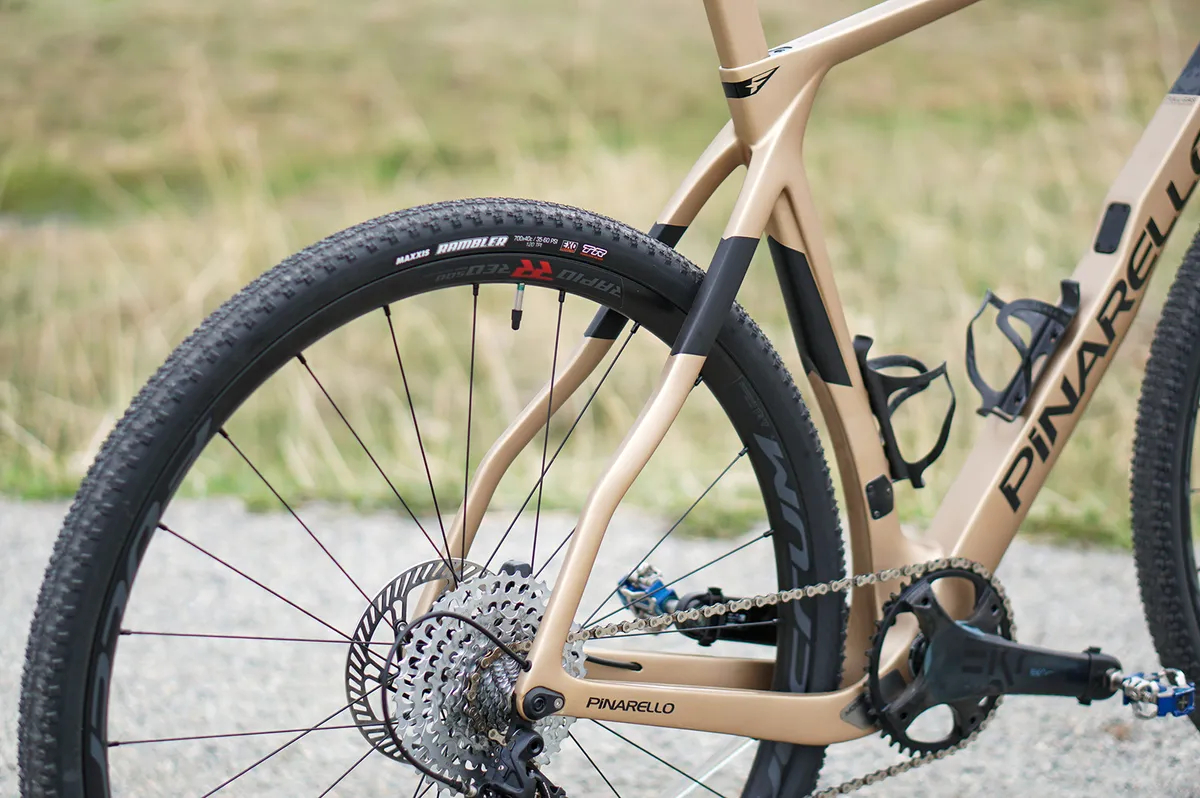
The wheels engage quickly and are not overly harsh, but are not the lightest and certainly not the most aero options out there. For a do-it-all gravel bike, they make good, practical sense; for an aero race rig, however, they come up short.
As someone who likes fast group rides and gravel races, for me Pinarello has nailed the geometry. The bike is easy to manoeuvre and accelerate on, but isn’t skittish in corners.
I appreciate that the head tube (at 165mm for this 56cm) let me get my desired position, because some gravel bikes are a bit tall for my tastes. However, if your aspirations and fit requirements are less racy, or you want a gravel bike that places greater emphasis on multi-day comfort, that’s not necessarily within the Grevil’s remit.
Equally, the Grevil F has relatively few mounting points by today's standards. There are mounts for three bottles cages – two in the main triangle and one under the down tube – but that's about it. There are no fork or top tube mounts, further demonstrating the Grevil F's relatively narrow focus.
How does the Pinarello Grevil F compare to the Cervélo Áspero and other gravel race bikes?
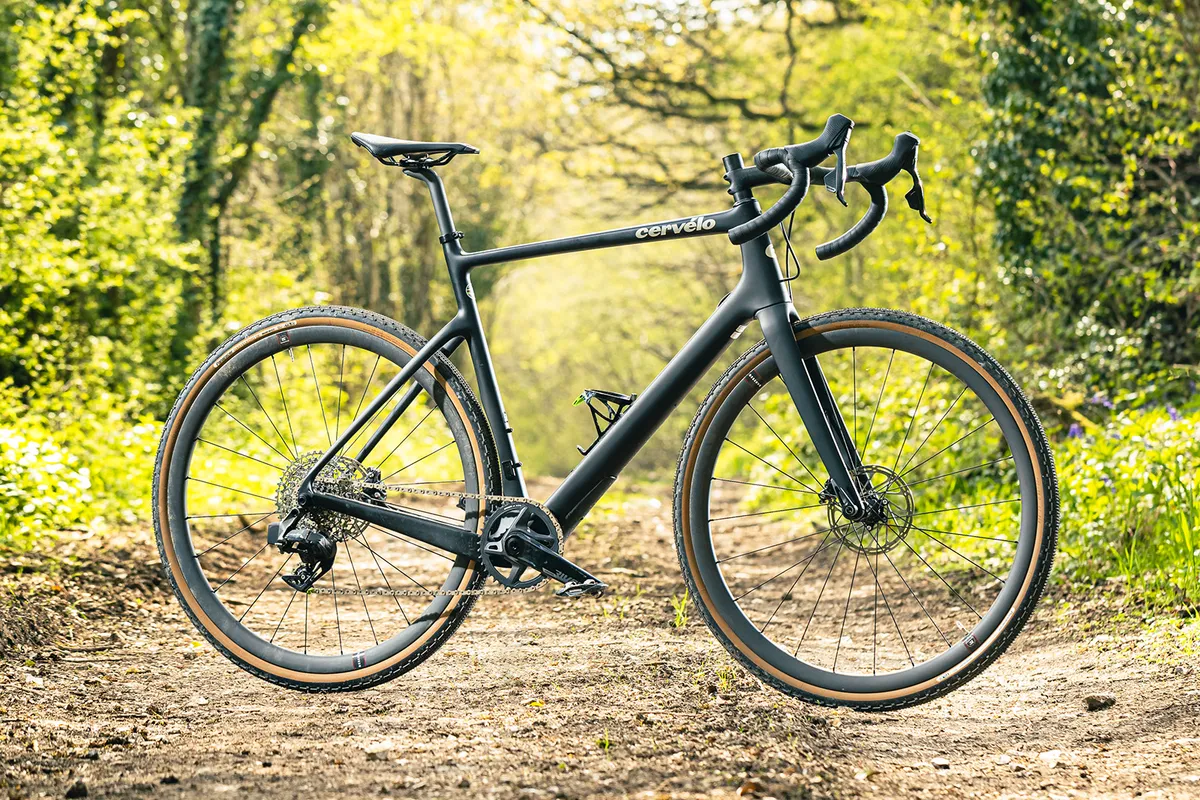
In a few short years, gravel bikes have splintered into various sub-categories, from bikepacking to race.
The Grevil F is definitely in the race category, along with bikes such as the Specialized Crux, Cannondale SuperSix EVO SE and the new Trek Checkpoint. Putting a finer point on it still, the Grevil F is an aero gravel race bike, which puts it alongside the Cervélo Áspero and the 3T Exploro RaceMax.
The Exploro RaceMax is substantially (~$2,000) cheaper and has greater tyre clearance, up to 61mm with 650b wheels, compared to 2.1in (around 53mm) for the Grevil, if you swapped the stock 700c wheels to 650b.
The Áspero is also cheaper and comes with better wheels. Neither has the fully internal routing through the cockpit that the Grevil F does – which could be a positive or a negative depending on your preferences.
The 3T and the Cervélo sit lower than the Grevil F. The upside to more bottom bracket drop is greater stability; the downside is an increased chance of clipping a pedal.
Pinarello Grevil F bottom line
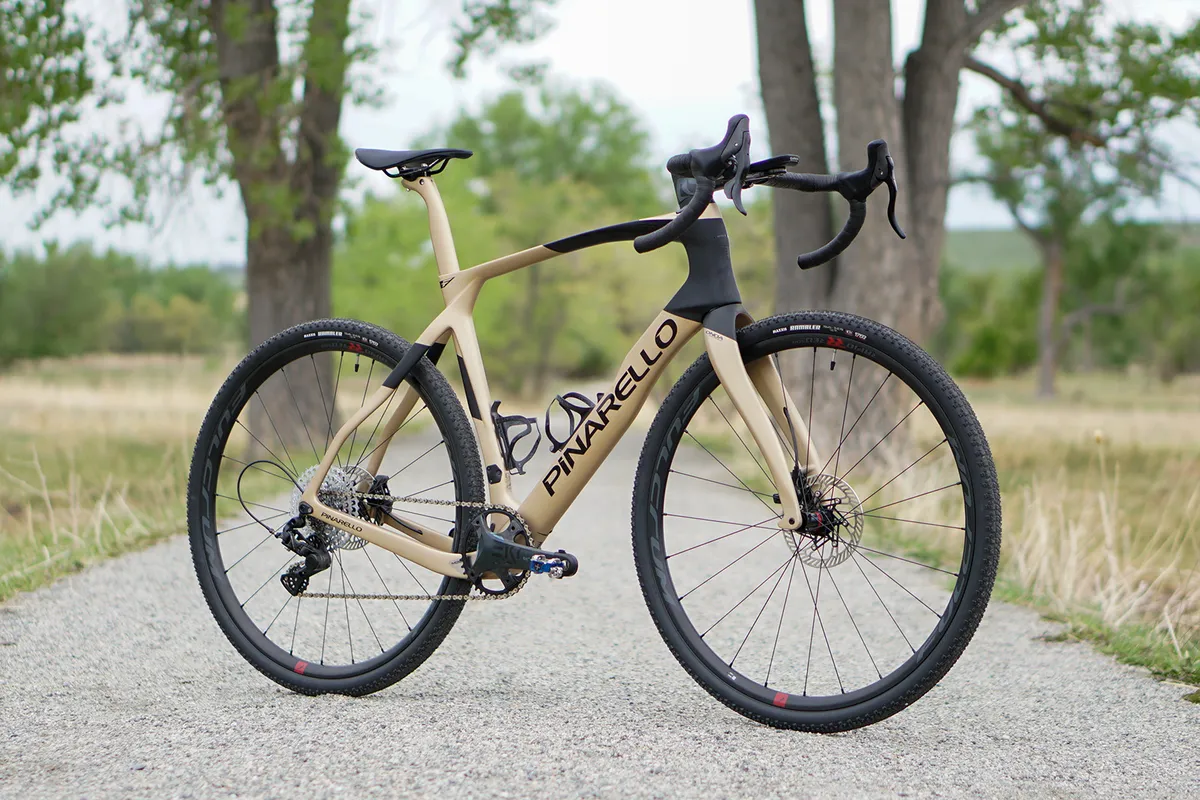
While you could, of course, strap some bikepacking bags to the Grevil F and head off into the woods for an overnighter, that is not what this machine is designed for.
The handling and geometry of Pinarello’s latest gravel race rig match its aerodynamic design and claims – it is a fun bike to ride fast in groups or alone.
The MOST bar and stem are straightforward components, but effectively demand that you are past experimenting with different sizes, because changing either is an expensive chore.
The wheels are also straightforward, but seem better suited to a general-purpose gravel bike than an aero race steed.
Campagnolo’s Ekar group delivers what I feel to be the best gravel braking experience on the market, but with shifting ergonomics that may not suit everyone.
Product
| Brand | pinarello |
| Price | 5300.00 GBP,6500.00 USD |
| Weight | 8.8500, KILOGRAM (56cm) - claimed |
Features
| Fork | Pinarello Grevil F Onda |
| br_stem | MOST |
| br_frame | Pinarello Grevil F, Toray T700 carbon fibre |
| Tyres | Maxxis Rambler, 40mm, tubeless-compatible |
| br_brakes | Campagnolo Ekar |
| br_cranks | Campagnolo Ekar |
| br_wheels | Fulcrum Rapid Red 500 |
| br_shifter | Campagnolo Ekar |
| br_cassette | Campagnolo Ekar |
| br_seatpost | MOST |
| br_handlebar | MOST |
| br_availableSizes | 47, 50, 53, 55, 58, 60cm |
| br_rearDerailleur | Campagnolo Ekar |
